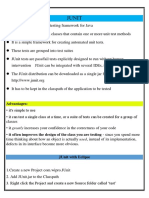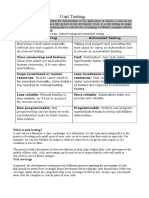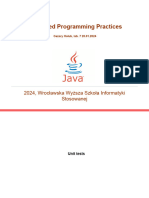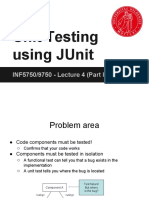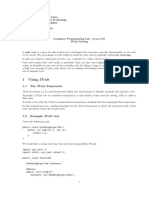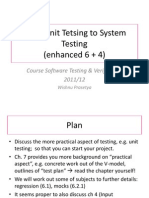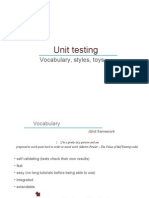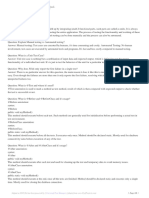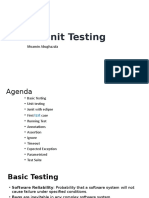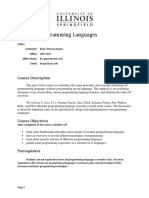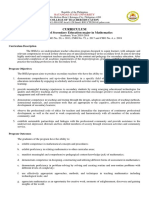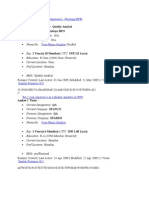0% found this document useful (0 votes)
24 views5 pagesJunit Notes
The document provides an overview of unit testing, specifically using Junit and mocking techniques. It explains the purpose of unit testing, the Junit framework, the concept of mocking, and the importance of code coverage. Additionally, it includes code examples demonstrating unit tests for various classes and methods.
Uploaded by
karthik mamidiCopyright
© © All Rights Reserved
We take content rights seriously. If you suspect this is your content, claim it here.
Available Formats
Download as TXT, PDF, TXT or read online on Scribd
0% found this document useful (0 votes)
24 views5 pagesJunit Notes
The document provides an overview of unit testing, specifically using Junit and mocking techniques. It explains the purpose of unit testing, the Junit framework, the concept of mocking, and the importance of code coverage. Additionally, it includes code examples demonstrating unit tests for various classes and methods.
Uploaded by
karthik mamidiCopyright
© © All Rights Reserved
We take content rights seriously. If you suspect this is your content, claim it here.
Available Formats
Download as TXT, PDF, TXT or read online on Scribd
/ 5

